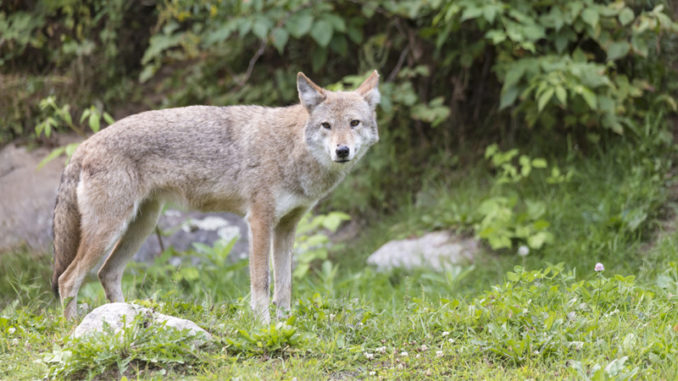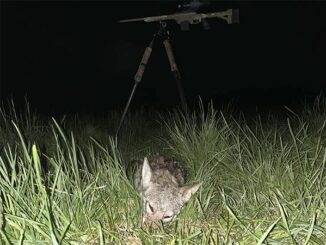
Rumors are rampant about how coyotes got here
“Everybody knows the DNR stocked coyotes in South Carolina to control the deer population.”
“I’ve got a buddy that was a game warden in the ’80s and he told me the NCWRC stocked all these coyotes in North Carolina.”
“The wildlife department stocked black panthers to kill all the coyotes in the state. They brought the coyotes here to kill the deer. But now we have too many, so they added panthers. Jaguars too, because they’re quicker in thick brush.”
“My uncle killed one back in the ’60s that had the SCDNR logo tattooed in both ears.”
“It was the auto insurance companies that brought them here. They got tired of paying out for damages caused by motorists hitting deer.”
If you’ve been around enough hunting camps, country stores, or cookouts throughout the Carolinas, you’ve probably heard statements similar to the ones above. It’s a widespread – let’s call it theory – among some folks, that the large numbers of coyotes we are dealing with are all because of a semi-secret stocking program led by the SCDNR and the NCWRC.
Here’s a creative one
Here’s one of the more creative ones going around: It was the paper mills that brought coyotes here. Yep, the paper mills. The story goes that when the paper mills planted saplings, deer were eating them before the trees grew big enough to make paper out of. So, they brought coyotes here to kill the deer. Can you imagine the thought process that took place for that?
“Look George, the deer are eating our saplings. We’ll never have enough trees to make paper. What should we do?”
“We could shoot the deer, or poison them.”
“Shooting them all would take too much time. Poisoning them would be illegal. Hey, why don’t we pull a big trailer out west and catch a bunch of coyotes? We’ll bring them back, release the coyotes, and they’ll kill the deer. Then we can make paper!”
“Brilliant idea! Sounds like a quick and easy solution. Let’s do it.”
The wildlife agencies have addressed this issue multiple times
You’ll hear similar arguments all throughout the south. But according to the SCDNR, the truth is, the agency has never stocked coyotes in any part of the state for any reason.
“Contrary to popular belief, the South Carolina Department of Natural Resources (SCDNR) did not stock coyotes in South Carolina to control the white-tailed deer population, or for any other reason,” is stated in the department’s literature on coyotes. The statement is repeated by staff members at various outdoor festivals throughout the state each year.
Still, plenty of doubters exist.
“Of course they’re not going to own up to it,” the conspiracy theorists say.
Would relying on coyotes to thin the deer herd even be feasible?
It seems like a whole lot of trouble for the SCDNR to have gone through, if in fact, they had stocked coyotes to control the deer population. They could have lengthened the season. Or allowed night hunting, made it legal to trap deer, or just poisoned them. Any of those would almost surely have thinned the herd much more quickly, and cheaply. Plus, those steps could easily be reversed once the agency felt deer numbers were in check.
Besides that, coyotes don’t commonly eat deer out west, their native range. So why would the SCDNR have ever believed they would eat them here? It took them a decade of study and a lot of money, resources, and manpower to finally realize that the coyotes were hurting our deer numbers, and doing it by preying on deer fawns. Did the agency just get lucky and guess the coyotes would adapt their diet to eating baby deer, but were so short-sighted that they didn’t see how bad it would get? Would wolves have been a better animal to import?
The official word from the SCDNR on how coyotes got here is similar to what wildlife agencies in other states say. The animals migrated here, and some were brought in illegally by fox pen owners to train hunting dogs in large, fenced-in enclosures. Over time, some escaped, and along with the ones that migrated here, bred with others, leading to the numbers we have now.
What do you think? Where did all these coyotes come from?





Be the first to comment